- Getting around Lijiang. Dont stay in the Old Towns more than 2 days, there is nothing to do. KRISS Oct 9, 2013 05:46
- 2013 Beijing Temple Fair BENNYLAU Feb 26, 2013 03:29
- Malaysian traveling from KUL - LAX vis Shanghai PVG ZATI_DY Jan 3, 2013 20:15
Steppeing Out
- Views: 4019
- |Vote: 1 0
- |Add to Favorites
- |Recommend to Friends
Travel Wary
For years now, ever since my first experience traveling during the psychotically crazed National Holiday, I’ve been looking for a way to get out—along with everyone else—and still sidestep the throngs and masses looking to do the same. Train tickets are impossible, even at expense. Airports are madness—and not worth the expense. Long distance buses reek uniquely and you often end up sleeping with people you normally wouldn’t have looked twice at—and not by choice.
So I dug deeper into China’s public transportation circles of hell. Below all the other preferred forms of transport lies the conveniently outcast ugly step-brother of the bus world: Little Long-Distance Buses. They’re the mules of the bus world—or perhaps the llamas—seeing as they’re not very big but they’re expected to go really far, carrying a lot of people and goods (including, as I’ve witnessed, live goats in the rear-carriage compartment), they’re a bit hairy and they kick unexpectedly.
Frontiers
But they’re a good way to get out if you’re looking for the least crowded stations and ticket availability—especially to neighboring cities or provinces. Our ticket bought us a ride north-west bound, over the mountains of Beijing and into the grasslands of Inner Mongolia.
We first stopped in the town of Feng Ning, a small outpost town on the northern border of Hebei Province. The four-hour bus ride from Beijing passed through dragon-scaled mountains that wind around the northern boundary of the capital. Passing beyond the frontier of the Great Wall (designed to keep the Mongols and all other rabble-rousers out of ancient China), the Hebei mountains grew steeper and the valleys deeper, gaining altitude until opening on high-plains mountain towns. The land between Beijing and Feng Ning cupped shady farming villages tempered by crisp October air, which had already turned the grasses golden and the leaves a gorgeous sun-sparked palette of oranges, yellows, and reds. Everywhere fields of corn and wheat were being harvested and hauled along the roads by horse- or tractor-drawn carts.
Passage
Feng Ning served its outpost purpose, giving us a bed and a meal to break the journey north. A hotel, a dumpling restaurant, and a street of stalls serving hot morning food later found us back on another mule-bus, bouncing two hours higher and steeper into the steppes.
After we ascended the mountains and crossed into the high-altitude plain, the outside smells shifted from ones marked by the sun-warmed stones of the mountains to the sweet earthiness of the grasslands. Close-quartered villages of brick and mud houses spread to include the canvas-swathed circular tents of the traditionally nomadic Mongolians. Signs began carrying both Chinese and the peculiar, vertical, keyhole-shaped letters of the Mongolian language.
Shifting
A giant statue of Genghis Khan on horseback greeted us at the boundary between the mountains and the plains, ready to pick us up and lead us into the wide open spaces of Inner Mongolia’s grasslands. Soon after the mule-bus caught up to a band of horse riders who began goading their mounts faster, racing the tattered rubber wheels that carried us along. I watched their dark hair sweep back, waving as their horses’ hooves tattooed the earth. Having got used to the forest of skyscrapers in the big city, I almost couldn’t believe open space like this existed in Eastern China—most of the East is spangled with cities, the ear-slope of China pierced with its urban jewels and shocking numbers of people. Yet here I was, a mere four hours north-west of the capital, ready to leap out of the mule-bus window and onto the back of the galloping horse--and hang on till sunset.
Genghis Gang
This area is known as Ba Shang, ‘on the plain’ bordering Inner Mongolia. The Mongolians, originally a gaggle of nomadic tribes spread throughout the steppes and deserts of the region, famed for raising horses and sheep, were united by Genghis Khan in the 1200's and conquered huge swaths of Asia with their speedy strong mounts and their ability to adapt to environments. Genghis' grandson Khubla began the Yuan dynasty after conquering Beijing in the 1230's. Khubla built an amazing palace in Xanadu, 280 km from the capital, Hohhot, lauded in verse hundreds of years later by Samuel Taylor Coleridge.
Home on the Range
Our little bus pulled up to a small village central to the Ba Shang region. We tumbled out onto the street and unloaded our bags, immediately picked up by a woman offering us a place to stay. Usually, it’s not a good idea to take the first offer that comes when you’re a foreigner stepping off the bus in an unknown town, but this wasn’t just any town. We agreed to go along with her and asked to look at the rooms before negotiating a price. She led us to her home, away from the paved central street of town and onto the dirt roads leading to small shops and residences, marked by the half-moons of horse-hoofs and the stippled print of motor-bike tracks. This was our kind of town.
She led us up to a courtyard surrounded by four long-houses, one side of which consisted of guest-rooms. We looked around at the embrace of the buildings holding together this family-style guest house, and saw that they offered a traditional lamb-roast dinner and would arrange horse-riding excursions. It was cozy and—well—home away from home. Somewhere between our agreement to stay there and the first dishes they set in front of us for lunch, we became part of their family.
Saddled Up
The next morning at 9 am we stepped out of the courtyard to find more than 15 villagers with their horses on leads, waiting for us. Our host told us to choose the horse we wanted and a guide would take us out. We followed him out of the town and along a road before diverging into the hills along small roads, one-lane tracks, and open expanses of field and sky. We rode the entire day, free to run our horses as we pleased, exploring the hills with our snaggle-toothed guide who grinned easily and wore high-top Converses.
We'd crest a hill or pass through a valley and find nothing beyond but another layer of golden hills clustered with autumnal trees. We swayed with the horses like grasses bending in the wind over the plains, and leaned in close to their bodies when they raced along ridgelines.
A Breather
At noon he led us to a tent perched in the middle of nowhere with a few dozen horses and riders: horses drinking and resting around troughs; humans around picnic tables. Our guide easily fell in with other guides and the tent’s proprietors. They smoked and played a few rounds of cards while we drank tea and stretched out our bowed legs. The horses grunted and huffed together, stamping and shifting feet. Our guide came to collect us an hour later, and we continued riding toward that line between the earth and the sky until the sun stopped making shadows beneath us.
Roast
That night, back at the guest house, we relaxed in the courtyard and waited while a sheep was slaughtered and put on a spit, which happened on the other side of the courtyard. The host stoked the flames below the spit and we drank beer while he turned the lamb around and around, releasing the heady aroma of the meat. A good handful of people joined us for the roast and it became a loud, raucous celebration of food and conversation under the black star-strewn sky. Lamb shanks arrived on our table, black-singed and crispy on the outside and we ate into the meat until we hit uncooked parts, then handed the shank back to our host to roast longer. In the meantime we drank local beer and ate dishes made from local ingredients and the guest house’s own fresh-laid eggs.
To the next Steppe
The next morning we rented two motorbikes from our host’s neighbors and motored through the back-roads and winding hills of Ba Shang, venturing farther and faster than we had the day before on horseback. We backtracked to the statue of Genghis to pay our respects, then took the long way round, weaving through enclaves of yurts and shooting ranges. In the afternoon, we checked out of the guest house and strolled to the main street to play pool and soak in the local scene. When the next mule-bus came through town, we hailed it down and hopped on, letting it take us deeper into Inner Mongolia.



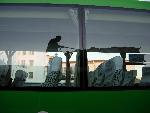
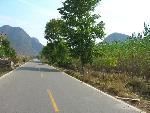
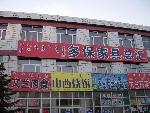
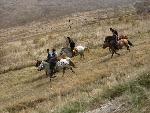
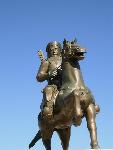
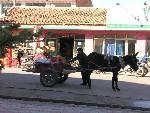

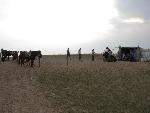

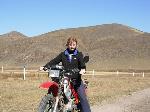
 Copyright © 1998-2026 All rights reserved.
Copyright © 1998-2026 All rights reserved.